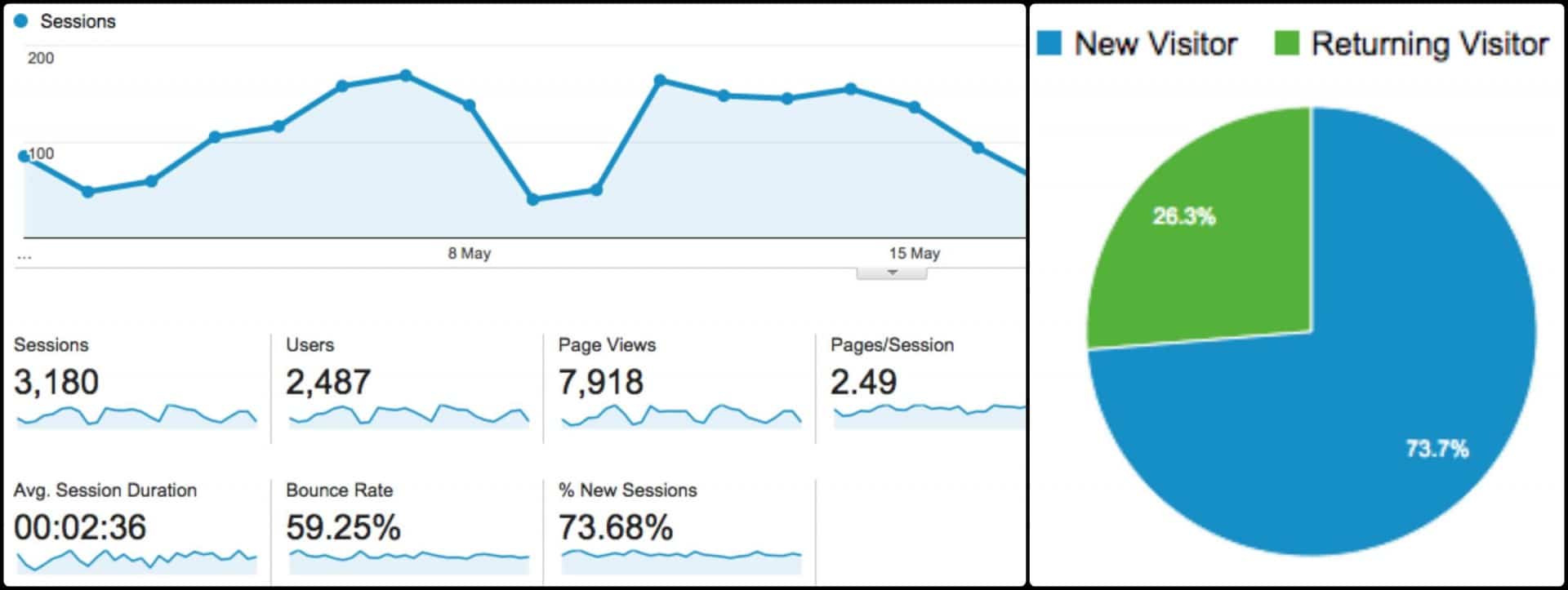When embarking on your journey into digital marketing your website is your key branding tool, with the aim to increase awareness and direct interactions with your business. As with any business goals, your priority objective is to create influence and a “go-to” attitude amongst your audiences and markets – you want them to come back regularly and purchase your products or services. Simultaneously you want to build and maintain a strong brand that targets new prospects.
Whilst this is quite obvious, the way in which your online performance (which incorporates the above) is measured and monitored needs careful consideration. KPIs or Key Performance Indicators form a fundamental part of this when identifying the aims of your business’s website. To help outline your goals, the following questions should be asked:
- What do you want to achieve for your website? i.e. more sales, more registrations or signups.
- What path do you want your user to take? i.e. do you want them to complete a purchase or sign up to a newsletter? How easy is it to do so?
The answers to these questions lie in the KPIs you have decided are important to your business. Below are some common KPIs that are helpful in showing how your website performs online, and how users are interacting with the content you are presenting them with. These KPIs can be separated into two sections, however they can all inform each other and provide insights into the state of the performance:
Brand and Website Influence – How well does your website perform?
- Sessions – how many users came to your website and engaged.
- New Sessions – the amount of users who have never visited the site before.
- Returning Visitors – the amount of users who have been to the site before.
- Page Views – the amount of pages looked at by users.
- Average Session Duration – the average time spent on your website.
- Bounce Rate – the percentage of users who immediately exit the site after entering in the first instance.
Conversions & Sales – How are users responding to your website?
- Goal Completions – how many users completed a purchase or registration.
- Revenue (for E-commerce sites) – how much revenue your website generates.
- Conversion Rate – the percentage of sessions that lead to a conversion.
- Cost Per Conversion (if using Pay Per Click advertising) – what each conversion cost accrued from your PPC spend.
These basic KPIs can provide an insight into your website that you wouldn’t otherwise have. A high amount of overall traffic can be positive, however you may find it more useful to know how many of your customers came back and how many new customers have found you. If the rate is good, you can make an informed decision on new ways to keep those customers engaged with your brand (discounts, offers of free items etc).
Furthermore, you may find that conversions are not as strong as you would like them to be. You may have a strong number of sessions (the site’s conversion rate may be quite low as a result), but your bounce rate may also be quite high. This tells you that users are coming to the site with ease, but something on, or indeed not on, your site may be discouraging them from making a purchase. This could be due to a number of reasons, such as pop-up boxes or a lack of good quality content. These are just a couple of examples of the things that KPIs can help you to identify. Ultimately, they can help you to make decisions to help push your business in the direction you want it to go using educated strategies and tactics.

An important KPI to track is your Return on Investment (ROI). You need to make sure that the money you are investing in your digital marketing strategy is generating the leads and business goals that you require. Using the rate of conversions, sales, signups or registrations to help calculate your ROI will help you to take the next step in developing your business’s online presence further.
Utilise your KPIs to help you and your team make better decisions by learning which factors influence these metrics. There may be degrees of seasonality to consider (do users or sales reduce at certain times of the year for example). Most importantly, analyse the data you do have to help optimise your site and provide the best foundations possible. Your KPIs are there to help you improve not just the performance of the website, but also the user experience.
